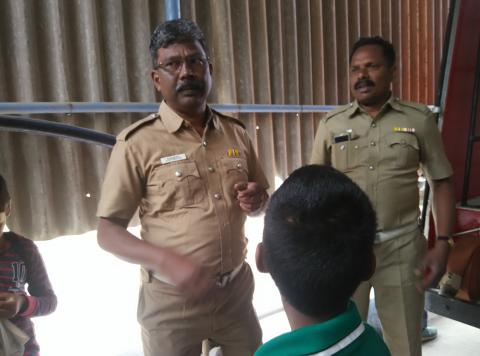
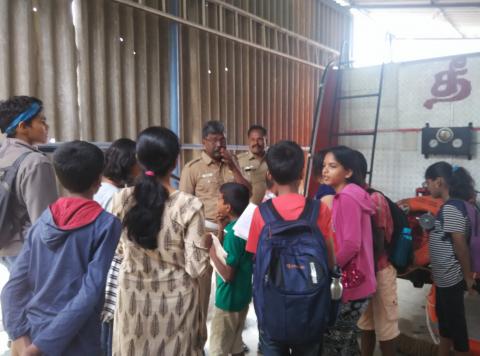
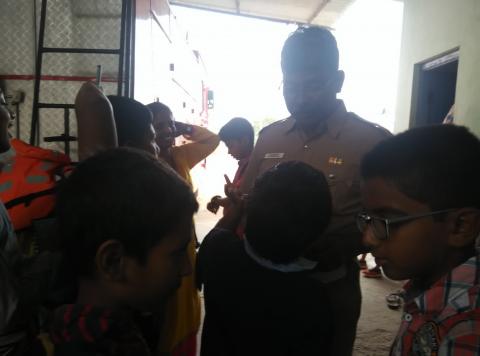
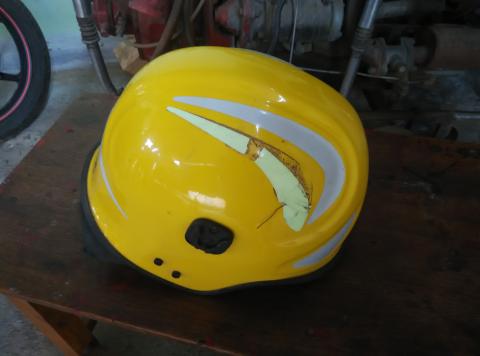



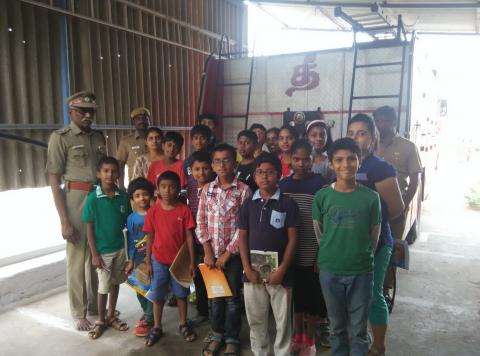
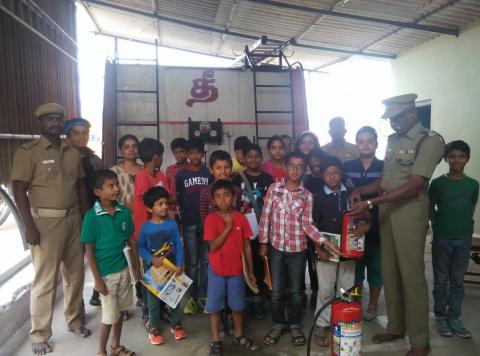





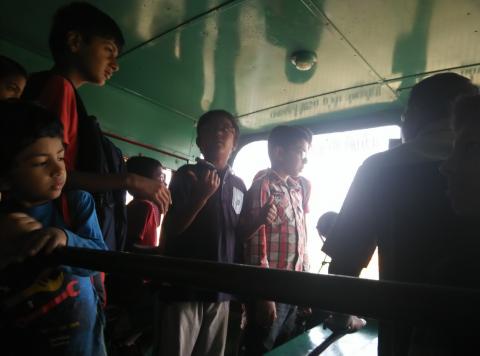

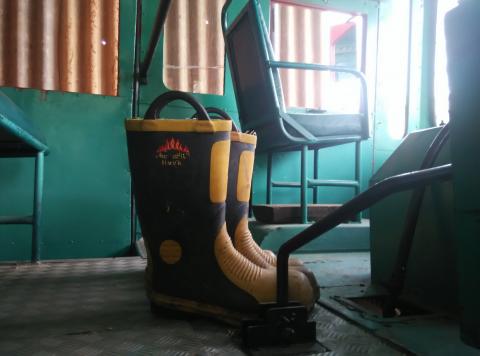
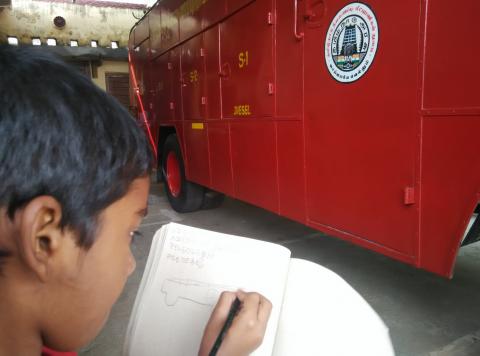
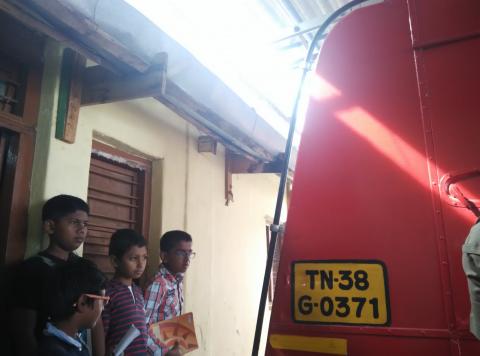

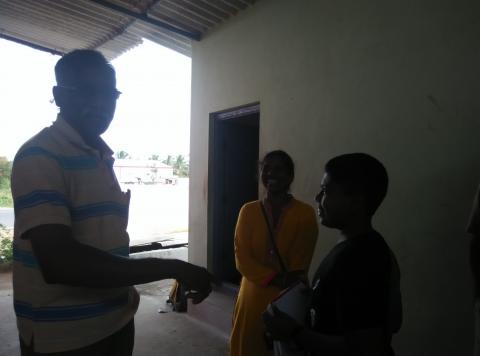
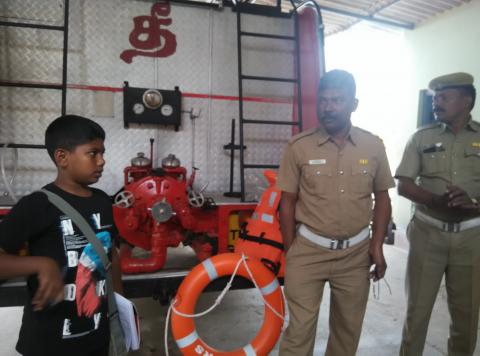

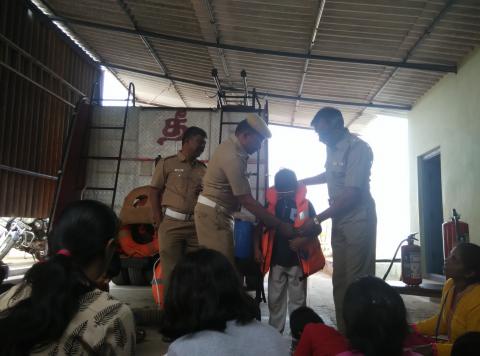
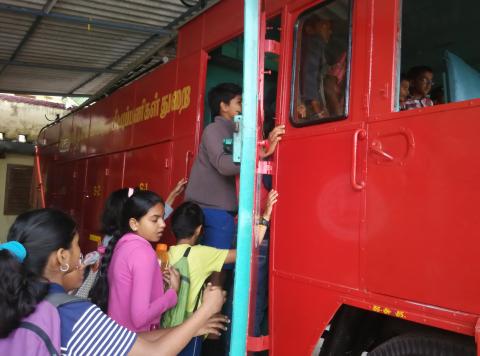

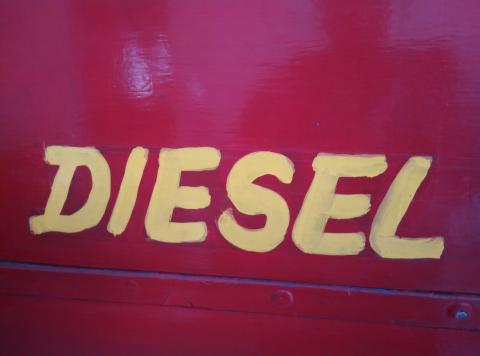
Visit to the fire station fired many questions in our souls
How do they feel when they are not able to rescue people?
What makes them courageous?
What kind of fuel does fire vehicle need?
Do they enjoy their job?
What do they feel when they go inside the fire?
How do they feel when they rescue all?
What fitness do they need?
How much is the volume if the water?
Where do they refill water?
How do decide whom to rescue first?
What kind training do they go through?
What kind of sound does the fire vehicle make?
How much are they paid?
How do their family members feel?
What if they are caught in a fire?
How much water do they need?
How do they decide the quantity of the water?
What training do they go through?
How do they do use the diameter of the pipe?
What is the speed of the water,?
What all do they mix in water?
What is the source of the water?
Do they have unlimited water?
How tall ladder do they have?
What is the speed of the vehicle?
How do they maintain the vehicle?
What makes them
How far is the next station?
Meet with the fire officers:
This is a fire station and we save lives.
How do we know when to go? How do you contact us? Our emergency call is 101. We find out what is the property or life involved? We don’t investigate the cause of fire before rescuing. We don’t charge any money, it’s a govt missionary. In a case of forest fire, we don’t put water hose or chemical, we also use branches to douse the fire. So first inform forest dept and then the dept can then use to call us. We use pure water, no chemical added. We have only five thousand liters in the tank and that is enough for a small fire. In a case of big fire, we call for water lorry and more help from the other fire stations. When you call at 101, the call will go to the nearest fire station. Seven people needed in a team for rescuing. It’s not only fire, we also rescue people drowning. In a case of any accidents in water, we only have life jackets. We need to call other fire stations for a boat if required. In fire accidents, we also danger our lives. When we don’t go for rescue operations, we study, physical training, training classes, understand topography and go through drills.
They shared about a rescue operation in a factory manufacturing explosive items and another factory making tyres. Just one mistake blasted the whole building. These were real life stories, caught undivided attention. Another story of rescuing in a textile factory, where the entire building collapsed on the rescue team.
Different classes of fire –
Class A involves – involving solid material like building, paper, wood
Class B involve – Oil, petroleums products. (cannot use water)
Class C involves – Gases, LPG
Class E involves – Electrical fire
In a case of LPG gas leakage and you feel the smell, don’t operate electrical switches. Open the windows and switch off the knob. If possible Take out the gas cylinder and keep in the open).
In a case of electrical fire, we use dry powder based extinguisher.
In a case of electrical fire, water is not effective because the densities are different. Water goes down and water goes down. We use foam or wet jute sacks. When we put a wet sack on the oil fire, it blocks the fire. Foam also makes a thin layer and blocks the air.
Understand fire triangle to understand extinguish the fire –
Remove the material causing the fire.
Reduce the heat
And block air (oxygen)
Safety gears for fire fighters are – Fire tunic, helmet, and gumboots.
For any fire use only bade
Discipline is was the last word before we said good bye to them.